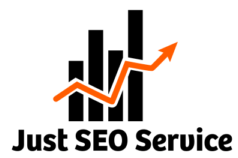Cost Efficiency Analysis of SEO vs. SEM Marketing
When deciding between SEO (Search Engine Optimization) and SEM (Search Engine Marketing)
as part of a digital marketing strategy, cost-efficiency is often one of the most critical factors. Both strategies can drive impressive results, but understanding their cost implications is essential for making an informed decision. This analysis will break down and compare the cost-efficiency of SEO and SEM to highlight their respective strengths and help you identify the best fit for your business.
Understanding SEO and SEM
SEO (Search Engine Optimization) focuses on improving your website’s organic rankings on search engines. It involves keyword optimization, technical audits, content creation, and link-building strategies aimed at increasing website visibility over time. SEO is a long-term commitment that builds enduring brand authority. By following a comprehensive seo checklist, you ensure that your SEO efforts are systematic and thorough, which helps increase your website’s Ranking.
SEM (Search Engine Marketing) involves paid campaigns, such as Pay-Per-Click (PPC) ads like Google Ads, to appear in search engine results instantly. This strategy is ideal for immediate visibility and capturing high-intent traffic while focusing on maximizing ROI within a short timeframe.
Cost Dynamics of SEO
- Upfront Investment
SEO demands an initial investment of time and resources to create high-quality content, optimize existing pages, and build technical foundations. Key costs include hiring SEO experts or agencies, content creators, and tools such as SEMrush or Ahrefs.
- Ongoing Costs
Sustaining SEO involves ongoing monitoring, updating strategies, and refining content to adapt to algorithm changes. While the maintenance costs are consistent, they are generally lower than the start-up investment over time.
- Cost Efficiency
- Once your site gains a strong organic ranking, the traffic generated is effectively “free”.
- Businesses leveraging SEO typically see lower customer acquisition costs when compared to paid advertising.
- Studies show that 75% of users ignore paid ads and prefer organic results, which means SEO delivers significant value in the long term by capturing trust from high-intent searchers.
Bottom Line for SEO: While upfront costs can be significant, the ongoing ROI improves dramatically as your website maintains high rankings. It’s a long-term strategy ideal for building sustainable growth.
Cost Dynamics of SEM
- Immediate Costs
SEM provides instant visibility on search results through paid ads, but every click comes with a price. These costs vary based on competition in your industry and high-value keywords. For instance, businesses in competitive fields like finance or insurance may pay upwards of $40 or more per click on highly sought-after terms.
- Variable Budget
SEM budgets are highly flexible; you can scale up or down depending on your financial capacity. Campaign costs can be optimized by targeting very specific user behaviors or demographics.
- Cost Efficiency
- SEM delivers quick returns and drives immediate traffic.
- However, its cost-efficiency decreases over time without a consistent injection of funds.
- Click-based payment models may lead to higher customer acquisition costs, particularly if campaigns aren’t rigorously optimized.
Bottom Line for SEM: SEM offers short-term visibility and measurable results but depends on continual financial investment. It’s ideal for time-sensitive campaigns or businesses seeking short-term traffic boosts.
Side-by-Side Comparison of SEO vs. SEM
Aspect | SEO | SEM |
|---|---|---|
Initial Investment | High (Time and Resources) | High or Flexible (Ad Spend) |
Time to Results | Long-Term (6-12 months for results) | Immediate (Ads go live instantly) |
Traffic Source | Organic | Paid |
Customer Acquisition Cost | Low (Improves over time) | High (Depends on campaign optimization) |
End Goal | Sustainable growth, brand authority | Immediate visibility, short-term ROI |
Flexibility | Low once strategies are set | High with scalable ad spend |
Duration of Impact | Long-lasting with proper maintenance | Stops once ad spend is cut |
Which is More Cost-Efficient?
The answer depends on your business goals and timeline.
- Choose SEO if you are focused on long-term growth. It’s cost-efficient for businesses aiming to build credibility and consistent organic traffic. Over time, the ROI can far exceed the upfront investments.
- Choose SEM if you need fast results. It’s efficient for targeting quick wins, seasonal offers, or specific audiences. However, SEM costs can escalate if campaigns are not optimized effectively.
The Hybrid Approach
For businesses looking to maximize cost-efficiency, a hybrid strategy can deliver the best results. Use SEM to generate immediate traffic while simultaneously investing in SEO for enduring growth. This dual approach ensures consistent visibility across both paid and organic search channels.
Final Thoughts
SEO and SEM are both indispensable tools in a comprehensive marketing strategy. While they differ in cost structure and time to results, their value lies in how well they are tailored to your business goals.
Need help strategizing? Our team at [Your Brand Name] can guide you in devising the most cost-effective SEO and SEM campaigns for your needs. Contact us today to accelerate your growth with confidence.

